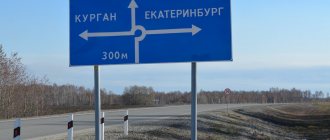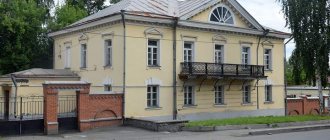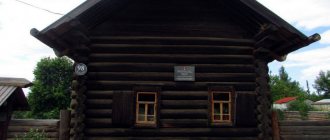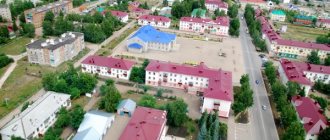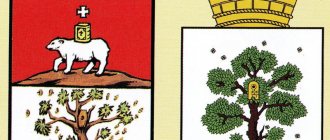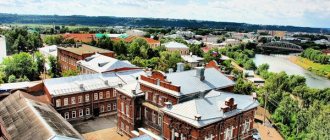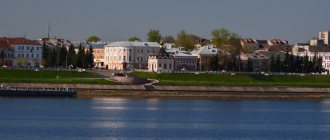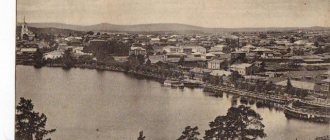Today, the former head of Kamensk-Uralsky Alexey Shmykov gave his first press conference in his new status. Well, as new, he has been in the position of Deputy Governor of the Sverdlovsk Region Evgeny Kuyvashev since January 2022. So on January 21, Alexey Viktorovich was able to show how he was able to adapt to the new status, issues and problems. This is a professional result based on the results of 12 months of work. We are sure that Alexey Shmykov did it. But let’s turn to the topics of the press conference and the answers of the deputy head of the region.
About rising prices for vegetables
— There are objective reasons for this - drought and a significant increase in the cost of fuels and lubricants, packaging, etc. In this regard, local authorities asked retail chains to organize supplies of vegetables from areas that were not affected by the drought. In order to keep the assortment on the shelves. For example, carrots and potatoes were imported from Belarus and the southern regions of the Russian Federation.
Logistics costs also had an impact. Our key task is to grow more, preserve and have our product on the shelves. There are commodity producers who have their own distribution network - here the price of products is lower. Today it is necessary to provide storage conditions for vegetables and increase watering areas. We help farmers with this with subsidies.
Karpinsky trail
The one and a half kilometer trail runs through the very center of the city. Traveling along it, you can get acquainted with the outcrops of igneous and sedimentary rocks, whose age reaches 430 million years. The author of the route is Ural local historian Vladimir Shevalev.
Karpinsky trail
The beginning of the tourist route “Karpinsky Trail” is located near the Spaso-Preobrazhensky Monastery, st. Kirova, 18. You can get to the starting point of the route by buses going to the stop. “Exhibition Hall” (then go through the courtyards to Kirov Street), or to the stop. "st. Prokopieva" (then go down to the garage cooperative), or to the stop. “Museum of Local Lore”, then climb the steps to Kalukhina Mountain.
What Sverdlovsk products are popular?
— Some retail chains even complain that agricultural producers take their products outside the Sverdlovsk region and even abroad. These are cheeses and chicken feet - they are going to China. I was surprised to learn that buns from Yekaterinburg were going to Moscow. A significant part of the products remains in local retail chains. If we take meat, then up to 50 percent (the products presented in local retail outlets are produced in the Sverdlovsk region). Milk, if you take it in bags, is up to 90 percent Sverdlovsk. Urals residents have a growing demand for more expensive farm products. Consumer demand is beginning to change - from inexpensive online products to high-quality farm products. This direction is developing, we support it.
Unique sports facilities
Athletes of various disciplines can also find entertainment in Kamensk-Uralsky Here are the main objects:
Motor track "Youth" named after. V.V. Friends
This sports facility is located on the site of the mine. The motorcycle track is located on rough terrain, in the very center of the city and is considered one of the best in Russia and Europe. Its length is 1940 m, width from 8 to 14 m.
Ski and biathlon complex "Birch Grove"
The area for physical education and sports is located on the site of a mine where ore was mined for more than 200 years. Now on the territory of “Birch Grove” there is a shooting range and an illuminated asphalt track, strength training equipment and a site for street gymnastics.
City walking park "Razgulyaevsky"
Razgulyaevsky Park is a corner of wildlife in the city center. A trail of varying difficulty levels for cyclists and Nordic walking enthusiasts.
Ice Palace – KamenskArena
Figure skating and hockey. Choreographic and gyms. For adults and children. The cost of a ticket with rental is 180 rubles/hour, without rental – 120 rubles/hour.
Times and days of public skating: Monday, Wednesday, Friday from 12 to 14 hours, Sunday - from 16.15 to 20.15, contact phone: +7 (3439) 30-29-30.
About oil in the Sverdlovsk region
Here, first, it must be said that last fall, the head of the region, Yevgeny Kuyvashev, said that there was an oil field in the region. Interested companies are conducting additional exploration of the areas, and documentation is being developed in some areas. Well, here’s a comment from Alexey Shmykov today:
— In the Krasnoufimsky district there is indeed such information and there is a specific enterprise that has received a license for research. It is just for exploration and research work until 2040.
To the holy places of the Urals
The material presents the tour city Rezh
Child of the Northern War
If the biographies of cities are compared with the destinies of people, then most of the cities in the Middle Urals can be called artisans from the beginning of their history to the present day. So the very first such city-workshop is Kamensk-Uralsky: The Kamensky state-owned iron smelting and foundry plant was built by decree of Peter the Great in 1701.
Provision warehouses of the Kamensk plant
At that time, Russia entered the Northern War with Sweden, whose army was considered the most technically advanced in those years. To win the war, Russia needed its own metal, its own artillery production. That is why, thanks to the outbreak of the war, accelerated construction of metallurgical and ironworks plants was launched in the Urals. It was then that the Urals became the “supporting edge of the state.”
Kamensk-Uralsky: history and sights: the “Cannon” monument
Kamensk guns first showed themselves in the famous Battle of Poltava. In 1967, on the high right bank of Kamenka, next to the dam and Kamensky pond, a memorial in the form of a cannon was erected, which became one of the symbols of Kamensk-Uralsky. The bas-reliefs of the monument's pedestal depict scenes of military battles in which guns produced at the Kamensky plant took part. The square near the monument offers an amazing view of the historical part of the city; one of the observation platforms is located here.
Kamenskaya dam. Photo by Alexander Shatunov
Kamensky "Kremlin"
If historical cities of central Russia are characterized by fortified buildings in the form of a kremlin or monastery, coastal cities are characterized by an embankment or a port, then typical mining centers in the Urals are characterized by a dam, a pond and factory buildings near the dam. The Kamensk dam and pond are the first among dozens of similar factory hydraulic structures in the Urals. During the Soviet years, the dam in Kamensk-Uralsky was reconstructed. A two-story building was built next to the spillway in a classical style; it houses the main control mechanism.
Kamensk-Uralsky: history and sights: factory office of the Kamensk plant
On the left bank of Kamenka, next to the dam, in a large area, the classical ensemble of the main factory buildings of the old plant has been preserved. This ensemble was created under the leadership of the most famous architect in the history of the Urals - M. P. Malakhov. Among similar factory ensembles preserved in the Middle Urals, Kamensky is perhaps the most beautiful. In part, only Nizhny Tagil can compete with it.
Turret of the factory office of the Kamensky plant
Stretched into one long line, the extended building of food warehouses and the offices of the Kamensk State Iron Smelting Plant impress with their scale.
Factory office tower
The main compositional center on this straight line is shifted to the left - the turret of the factory office; it is, as it were, “reflected” in the bell tower of the Holy Trinity Cathedral, which is similar in shape but larger in size, which is the main structure of the entire ensemble. The office building of the Kamensky plant was built in 1825, now it houses exhibitions of the local history museum, one of the features of which is the artillery collection, collected from samples of the Kamensky plant, starting from 1733.
Kamensk-Uralsky: history and attractions: food warehouses of the Kamensk plant
Holy Trinity Cathedral in Kamensk-Uralsky
The center of the entire factory composition is the Holy Trinity Cathedral, interesting for its architecture, in the construction of which at the beginning of the 19th century the most famous Ural architect M. P. Malakhov took part.
Kamensk-Uralsky: history and attractions: Holy Trinity Cathedral and the shop of merchant Bukharev
In fact, the construction of the first stone church in Kamensk began back in 1790, but during construction in 1803, the temple collapsed due to miscalculations. The construction of the Trinity Church actually began anew, consecrating the temple in 1813. But the new church was again unlucky: very soon the foundation of the bell tower sank and it tilted heavily, turning into a falling one.
Holy Trinity Cathedral, in the distance - Spaso-Preobrazhensky Monastery Church
The building was again in need of restoration. It was here in 1821 that the architect Mikhail Malakhov got down to business. The architect added a second floor to the temple, added two new aisles to the north and south, and most importantly, erected a wonderful bell tower. By 1828, the Holy Trinity Church organically merged the signs of Baroque (the dome of the temple) and Malakhovsky classicism, which was becoming a thing of the past in those years: facades, side chapels and a brilliant bell tower. It was thanks to the bell tower that the Trinity Church gained fame as one of the most beautiful churches in the Middle Urals during the 19th century.
Photo by Prokudin-Gorsky at the beginning of the 20th century
But Malakhov managed not only to integrate new forms into the old appearance of the temple, to preserve the harmonious appearance of the church, he created a real ensemble around him: classical domes and spiers appeared on the nearby buildings of the Kamensky plant administration and some workshops of the plant.
In 1912, the Holy Trinity Church received cathedral status. But soon a revolution occurred. In 1930, the Holy Trinity Cathedral was closed. The temple was looted, the bells were thrown off, and the dome was dismantled. At first, the bell tower was used by firefighters, then it was converted into a parachute tower. A club was located on the second floor of the temple, and a museum and library on the first floor. Later, the building was occupied by a garment factory.
Only in 1992 the temple was returned to the Church. Restoration work began, during which a strange find was discovered: human skulls with holes punched in them were found in the wall. Nowadays, the restored Holy Trinity Cathedral is the main church of the newly formed Kamensk diocese.
Bell tower of the Holy Trinity Cathedral
Today, among the shrines of the Holy Trinity Cathedral in Kamensk-Uralsky, believers celebrate the icon of Simeon of Verkhoturye with a particle of the saint’s relics.
Twelve saints of the Kamensk land
With the exception of Verkhoturye, no region in the Middle Urals is associated with the fate of so many saints as with Kamensk-Uralsky and its environs. Eleven holy martyrs and the venerable confessor John Keroletin intertwined their destinies with the past of the Kamensk land.
The lives of three of these saints are connected with the history of the Holy Trinity Cathedral. There are only a few such temples throughout the Urals. This is the uniqueness of the Kamensky Cathedral.
Kamensk-Uralsky: history and sights: Holy Trinity Cathedral from Lenin Street
Hieromartyr Arkady Garyaev began his pastoral path in Trinity Church, who served here as a psalm-reader from 1898, and as a deacon from 1905 to 1907. Having become a priest in 1907, Father Arkady was transferred to the current city of Severouralsk. He died as a martyr on July 1, 1918.
In the summer of the same year, two priests of the Holy Trinity Cathedral, canonized by the Church at the beginning of the 21st century, were martyred at the hands of the Red Army. Seventy-year-old Father Vasily Pobedonostsev, who served in the Kamensky Church since 1891, was hacked to death by Red Army soldiers with sabers at the Sinarskaya railway station (now “platform 292 kilometer” in the city of Kamensk-Uralsky). Another clergyman is Pyotr Korelin, he served in the Kamensk church from 1904 to 1918, Red Army soldiers drowned him in the waters of the Tura River.
View of the Transfiguration Church from the Holy Trinity Cathedral
On September 2, 1919, the priest of the Transfiguration Monastery of the Kamensk plant, Nikolai Biryukov, who in 2002 was numbered among the Council of New Martyrs and Confessors of Russia, was shot.
The servants of the Sretensky Church in the village of Kolchedan, priest Stefan Lukanin, deacons Georgiy Begma and Nestor Gudzovsky, were brutally killed by soldiers of the Red Eagles regiment on July 23, 1918, near the Sinarskaya railway station (now the city of Kamensk-Uralsky, station “Platform 292 kilometer”). Before the execution, the temple servants were subjected to terrible torture.
Icon of the Pyrite Hieromartyrs
Ioann Georgievich Budrin served in one of the rural churches of the Shadrinsky district, was killed on June 21 at the Sinarskaya station, now the “platform 292 kilometer” station in the city of Kamensk-Uralsky.
At the end of the 19th century, the future martyr John Shishov served as priest of the Intercession Church of the women's community in the village of Kolchedanskoye for several years.
In 1895, the future priest and martyr Vladimir Kholodkovsky was born in Kamensk, who was executed in 1937, and before that he courageously endured all the vicissitudes of fate with faith in God.
The Vvedensky Church in the village of Travyanskoye is associated with the life of Holy Father Alexander (Popov)
In the vicinity of Kamensk-Uralsky there is the village of Travyanskoye, where Father Alexander Popov served in the Vvedensky Church for 25 years, until his martyrdom in 1918. There in Travyanskoye he suffered martyrdom, and in 2002 he was canonized as a saint.
The village of Sosnovskoye: the Church of the Nativity is connected with the life of St. John (Kevroletin)
In the village of Sosnovskoye, Kamensky district, in the Church of the Nativity of Christ from 1935 to 1937, Rev. John Kevroletin, a famous Ural ascetic, served in the Church of the Nativity of Christ, who played an extremely important role in the most difficult Soviet years in preserving the Orthodox faith on the Ural soil.
Spaso-Preobrazhensky Monastery in Kamensk-Uralsky
From the side of the old factory ensemble there is a beautiful view of the Spaso-Preobrazhensky Monastery, which is located on the high opposite bank of the Kamenka River.
Kamensk-Uralsky: history and sights: Spaso-Preobrazhensky Church
The domes of the Transfiguration Church, the factory management tower and the bell tower of the Holy Trinity Cathedral create virtually one straight line of architectural dominants. From this place perhaps the best view of the monastery. Photographic views of the monastery with the turret of the Kamensky plant office in the foreground are popular. To visit the territory of the monastery, you need to cross the Kamenskaya dam, climb the hill, and then go to the right.
According to local data, the history of the Transfiguration Monastery as an unofficial women's dormitory begins in 1822. In 1860, the community was officially approved.
In 1861, a house Kazan church was built next to the cell building. And in 1878, in the center of the entire ensemble, the stone Church of the Transfiguration was consecrated. The entire territory of the monastery was surrounded by a stone fence, which looked beautiful from the outside. In 1892 the community was transformed into a monastery. On the eve of the revolution, 30 nuns and 150 novices lived within its walls.
Spaso-Preobrazhensky Monastery at the beginning of the 20th century
After 1917, difficult times came for the sisters of the monastery. On September 2, 1919, the monastery priest Nikolai Biryukov, who in 2002 was included in the Council of New Martyrs and Confessors of Russia, was shot. Currently, Father Nikolai is revered as the patron saint of the monastery.
In 1920, the monastery was liquidated, and in October 1921, the Church of the Transfiguration was closed. For many years, organizations operated on the territory of the monastery, destroying or severely mutilating the buildings of the monastery. Only in 1991 the monastery complex was included in the list of historical and cultural monuments. And in 1998, it was decided to open a men’s monastery on the territory of the former convent. Since 2001, work began on the restoration of the monastery complex.
Monastery Church of the Transfiguration
Among the main shrines of the modern monastery are the relics of the holy righteous Simeon of Verkhoturye, St. Tikhon, Patriarch of Moscow, St. Isaiah, Bishop of Rostov, St. Demetrius, Metropolitan of Rostov and icons of these saints.
Merchant houses
To the right and left of the Holy Trinity Church along Lenin Street and adjacent streets, old pre-revolutionary buildings predominate. About 30 mostly merchant houses. In terms of their number, historical Kamensk is far from the leader in the Middle Urals, but what immediately catches your eye is that these houses, as a rule, do not have a typical brick pattern of facades.
The gaze stops at them, I want to capture the ancient Kamensk buildings on camera. Customers and architects showed a lot of imagination; even brick themes of Art Nouveau, so rare in the Middle Urals, can be seen here.
Tronin's House
Shop of merchant Bukharev
From Sverdlov Street, which crosses Lenin Street in this historical part, you can see an interesting picture - the perspective of the street is closed by the huge volume of the Intercession Church.
Kamensk-Uralsky: history and sights: Intercession Church in the perspective of Sverdlov Street
Church of the Intercession
Along with the Holy Trinity Cathedral and the Transfiguration Church, the Church of the Intercession is the architectural dominant of historical Kamensk. If from the old center the main architectural line is formed by the cathedral, the turret of the factory office and the Church of the Transfiguration, then from the high right bank of the Kamenka, from the observation deck at the “Cannon”, there are the cathedral and the Church of the Intercession.
In the foreground is the Holy Trinity Cathedral, in the distance is the Church of the Intercession
The temple, located on the high Pokrovskaya Mountain, was built and consecrated in 1885. In the 1930s, persecution of believers intensified. A cannon was installed next to the temple. When the service began, the soldiers fired several blank shots. This was necessary in order to prevent believers from praying. Soon the Cheka authorities arrested the priest of the church, Father John (Zykov), and Mother Ksenia. Nobody saw them again. And after very little time, with the note “due to the absence of a priest,” the temple was closed for worship. This happened in 1934. The Church of the Intercession became the last closed church in Kamensk-Uralsky. The building was later converted into a prison in the 1940s and 1950s. Five-story bunks were built in the warm room. The prison was closed in the early 1960s. From then until the early 1990s, the building of the Church of the Intercession housed the warehouse of Rostorgodezhda.
Kamensk-Uralsky: history and attractions: Intercession Church in Kamensk-Uralsky
In 1991, the Church of the Intercession was returned to believers. In 2000, when the main restoration work was completed, the temple was consecrated. In 2003, the outer walls were plastered and painted in the now familiar sky blue color. In 2012, next to the Intercession Church in the city of Kamensk-Uralsky, a monument was opened in honor of the 200th anniversary of the victory in the Patriotic War of 1812.
Near the Church of the Intercession there is a famous church that rings bells for the whole country. Largely thanks to him, Kamensk-Uralsky is called the Bell Capital of Russia.
Bell capital of Russia. Temple of Alexander Nevsky
Kamensk-Uralsky: history and attractions: Alexander Nevsky Temple
It is very interesting to visit Kamensk during the annual all-Russian bell ringing festival “Kamensk-Uralsky - the bell capital”, which since 2005 has been held annually in July as part of the celebration of the Tsar’s Days. The fact is that the largest bell manufacturing enterprise in Russia and Europe, Pyatkov and Co., has been operating in the city for almost 20 years, and it became the organizer of the unusual event.
At the enterprise "Pyatkov and K"
For several hours in a row, the everyday, Easter red ringing, the festive peal with the flavor of different regions of the country, sounds over the city. People do not hide their emotions, they are not ashamed of their tears from hearing the beauty of the bell ringing.
On Leninsky Komsomol Square
The main venue for the bell festival was a small but very noticeable modern church, consecrated for the 300th anniversary of the city in 2001 in the name of the Holy Blessed Grand Duke Alexander Nevsky. The temple was erected on a high pedestal in the traditions of ancient Russian architecture on the main modern square of the city - Leninsky Komsomol (two kilometers from the historical center of Kamensk-Uralsky). The temple was designed by the architect Alexander Dolgov, who is the author of one of the first projects of the Church on the Blood in Yekaterinburg.
Temple of Alexander Nevsky
Very quickly the new temple turned into one of the calling cards of the city of Kamensk-Uralsky.
Natural attractions of Kamensk-Uralsky
The main natural attractions of Kamensk-Uralsky are the coastal cliffs on the Iset River. It was on the site of this reservoir within the city that nature showed a riot of its imagination, giving Iset many bizarre rock formations. To view even a small part of them from the shore, you need to drive from Lenin Street along Sanatorny Lane to the Sosnovy Bor guest complex.
Recreation center "Sosnovy Bor"
The main buildings of the complex, designed in classical forms, are located on the top of a cliff, offering beautiful views.
View of the Iset rocks from the Sosnovy Bor base
View of Kamensk Uralsky from Sosnovy Bor
From the complex, downstream the Iset, there is a walking trail from which you can admire the coastal cliffs of the opposite bank of the river. Among them is the main masterpiece, the natural symbol of the city of Kamensk-Uralsky - the Stone Gate rock - built in the form of a huge miraculous arch.
View of the Stone Gate rock from the Sosnovy Bor base
Rock Stone Gate
A more complete acquaintance with the Iset Rocks involves a walk on the river bus, which runs daily during warm periods from the Boat Station on Gogol Street.
All churches of the Kamensk diocese
Revun threshold on the Iset River
Smolinskaya cave
About the African plague in the Sverdlovsk region
— African swine fever, which has been raging in the region since September 2022, has been defeated in the Sverdlovsk region. A total of 11 outbreaks were recorded in the region. The source of contamination in Bogdanovichsky, Kamyshlovsky and nearby farms in the Southern and Eastern administrative districts was food waste from the military unit. Pigs should not be fed food waste that has been heat-treated. To compensate for losses to agricultural producers affected by African swine fever, 13 million rubles were allocated from the reserve fund of the government of the Sverdlovsk region. At the beginning of December, the quarantine began to be lifted.
Photo: “New Day”, JustMedia, Press service of the Kamensk-Uralsky administration.
Kamensk-Uralsky Airport
On the territory of Kamensk-Uralsky there is only a military airport. Military unit 45123, the air base of the 2nd Air Force and Air Defense Command, is based here. The nearest civilian international airport is Koltsovo, which is located in Yekaterinburg. The distance from Kamensk-Uralsky to the airfield is 94 km. The airport has the status of a federal facility. Operating hours: 24 hours a day. It ranks 5th in the list of the largest airports in Russia in terms of passenger traffic.
The airport serves aircraft of Russian and foreign airlines: NordStar Airlines, Aeroflot, Air Astana, FlyDubai, Turkish Airlines. Popular destinations of regular and charter flights: Moscow, St. Petersburg, Dubai, Novosibirsk, Krasnoyarsk. The annual passenger traffic is more than 6 million people.
Algorithm for calculating the distance between cities
Route calculation is based on an algorithm for finding the shortest path in a weighted road graph (Dijkstra's algorithm). Distances are determined using exact satellite coordinates of roads and settlements. The calculation is the result of computer modeling, and models are not ideal, so when planning your trip route, do not forget to include a reserve.
See also:
- table of distances between Russian cities
- Calculate distances for your site
- Calculation of distances in other languages in other countries:
